
Our Pest Library
Your Complete Guide To Indianapolis Pest Identification
When pests invade, you want to know what you’re dealing with. Whether you're surprised by a mouse when you open a cabinet door or discover an unknown bug outside your window, our pest library provides information on all of the most common pests in our area of Indiana, the dangers they bring, and what you should do about them.
-
Pest Library
-
Ants
One of the most common and easy-to-identify household pests is the ant. In our area, the pavement ant and carpenter ant commonly invade yards and homes. Ants all have three distinct body regions: head, thorax, and abdomen. They also have six legs and a pair of antennae; only the reproductive members of ant colonies have wings.
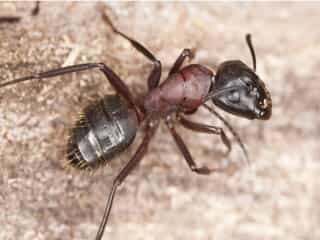
Nobody wants to wake up to find an army of ants nibbling on their morning muffins, but this scenario often occurs. Ants are small pests but invade yards and homes in large numbers. They tend to have multiple nesting sites and are difficult to control and eliminate. Putting into place a professional pest control service is the best way to get rid of ants and keep them from returning. An experienced pest professional will ensure ants stay out of your kitchen the entire year. Professional services will also protect your home from structural damage that destructive species like carpenter ants can cause.
There are some ways to prevent ants from invading your property. Leave a barrier between any mulch or grass and your home’s foundation. Inspect your home’s foundation, exterior walls, and roofline, and seal up any entry points found. Make sure screens are intact and place door sweeps on exterior doors. Use dehumidifiers to reduce moisture levels in your home and fix leaky pipes or fixtures. Limit food sources by keeping locking lids on trash cans and compost bins, and keep outdoor eating areas cleaned-up. Trim back trees branches, bushes, and shrubs from the exterior of your home.
-
Bed Bugs
Bed bugs are parasitic pests that only feed on the blood of mammals. Their preferred host is humans, but they will also feed on our pets and other animals such as birds and rodents if people are not available. The adults are small insects, growing to about 1/4 of an inch long. They have mahogany, oval-shaped bodies that are flattened from top to bottom. Bed bugs are wingless and do not jump. Instead, they use their six legs to crawl onto people’s clothing or belongings to move from location to location.
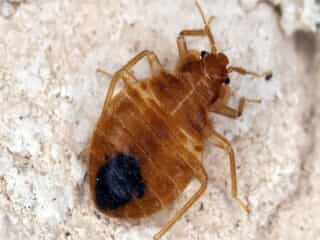
You can find bed bugs anywhere people live or visit regularly. Common places where these insects live include homes, apartment buildings, hotels, shopping centers, hospitals, movie theaters, libraries, and schools. Your home is a place that you should feel comfortable in, relaxing with your family and recharging with a good night's sleep. However, if bed bugs have hitchhiked their way into your home, it will quickly turn into a place you want to avoid. Bed bugs first invade sleeping areas, hiding in the seams of or under mattresses and box springs. They will travel throughout your home as the infestation develops, infesting multiple rooms. Other common hiding spots for bed bugs include the seams of upholstered furniture, in the cracks of wooden furniture, behind baseboards, in wall voids behind electrical outlets, and behind hung pictures.
The best way to avoid bed bugs is to always keep your belongings up off of the ground in public places and away from other people’s belongings. Another important tip is to not buy used furniture, mattresses, or box springs for your home. To help reduce hiding spots, put bed bug-proof covers on mattresses and box springs. It is also helpful to regularly vacuum your home’s floors and change bedding weekly, inspecting mattresses and box springs for signs of bed bugs.
-
Cockroaches
Cockroaches are resilient insects that live in a wide variety of indoor and outdoor environments. They are large insects that have hard, flat, oval-shaped bodies, antennae that are usually as long as or longer than their bodies. Depending on their species, cockroaches may or may not have wings. Most species of cockroaches are social and live together in large groups, making controlling and eliminating them a difficult task. Two of the most common species living in our area are the German cockroach and American cockroach.
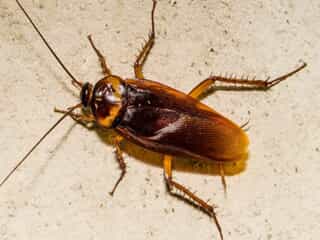
Cockroaches can find their way into any home or business while foraging for food, and may even be brought in accidentally inside of items like bags, used furniture and appliances, and potted plants. Cockroaches carry a large number of bacteria, viruses, and parasites on their bodies, legs, and feces. Their shed skins and excrement trigger allergies and asthma attacks, especially in young children. Cockroaches are scavengers and feed on a variety of food and non-food items. Inside your home or business, they quickly contaminate food and food prep areas. They will also damage personal property like curtains, upholstered furniture, and items made of paper. Another negative to having cockroaches in your home is that they secrete a foul-smelling substance that stains surfaces.
Keep cockroaches from finding their way into your property by sealing any spaces in its exterior. It is also a good idea to make sure weather stripping around windows and doors is intact and screens have no tears. Eliminate their access to water by fixing leaky pipes and fixtures, using dehumidifiers, and maintaining gutters. Remove food sources by keeping locking lids on outdoor trashcans and compost bins. Inside, store food in the refrigerator or in airtight containers, and wash dirty dishes daily. Additionally, inspect all appliances, potted plants, used furniture, and packages for cockroaches before bringing them in.
-
Fleas
Fleas are the most common pest living in the fur of animals. While animal blood is their preferred food source, fleas may also feed on the blood of people. Fleas can become a problem on any property, usually after being introduced by wild animals. These insects have hard, dark brown bodies that are flattened from side to side. Fleas are wingless but have large, powerful legs that allow them to jump onto their hosts and move through their fur.
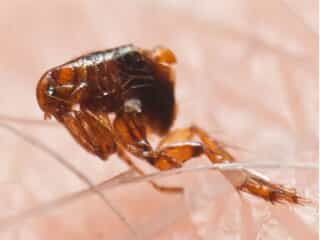
Fleas live most of their life in the fur of their hosts. When they are between hosts, they usually hide out in decks, in tall grass, under piles of debris, and in moist, shady soil. Fleas also successfully live and breed indoors. They are prolific breeders, and a small infestation can quickly grow and take over multiple areas in a home. Preventing contact with fleas is important because they spread diseases and can transmit parasitic tapeworms. Additionally, people and animals that are allergic to their saliva will develop an itchy, uncomfortable dermatitis that can potentially become infected.
To prevent flea infestations, reduce food source for wild animals by removing bird feeders and keeping locking lids on trash cans and compost bins. Create a barrier between any wooded areas and your yard. Keep the grass cut short, and prune overgrown shrubs and bushes. After spending time outside, inspect yourself and pets for ticks or fleas. Regularly bathe and groom your pets, and put pets on a year-round flea control program under the guidance of their veterinarian. Do not buy used furniture or rugs for your home, as they could be infested with fleas or their eggs.
-
Flies
Flies belong to the insect order Diptera, which means “two wings.” Adult flies have one pair of wings. House flies, blow flies, and fruit flies are common species that invade homes and businesses in our area; they are all considered “filth flies.” In addition to being a nuisance, filth flies can cause harm by spreading a variety of bacteria, pathogens, and parasites that can make people ill. House flies and blow flies are larger species of flies and have stout, sturdy bodies. The fruit fly is smaller and has a thin, delicate body.
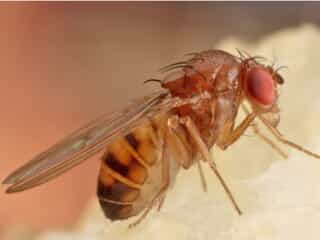
Moist, organic materials attract flies because it is what flies feed and lay their eggs on. Properties with compost piles, clogged gutters, garbage bins, gardens, outdoor eating areas, and animal excrement all attract flies. After finding their way to your property, flies will quickly get inside of your home or business. They typically enter through windows and doors, as well as through tears in screens. Fruit flies also get into your property on infested produce purchased from the store. Once flies have found their way inside, they tend to gather in kitchens, pantries, and other areas where food is stored or prepared.
In order to reduce fly populations on your property, reduce sources of food, water, and breeding grounds that could attract flies to your property. Make sure trash cans and compost bins have tight-fitting lids, pick-up fruits, and vegetables from the ground, and maintain gutters. Pick up pet excrement daily. Get rid of entry points into your home by repairing torn screens, placing weather-stripping around windows and doors, and keeping windows and doors closed as much as possible. Always inspect produce for signs of fruit flies before purchasing them from the store. Finally, keep fruits and vegetables in the refrigerator, not out on kitchen counters.
-
Rodents
Rodents make up the largest group of mammals. In fact, most non-flying mammals are rodents. Rodents are part of the order Rodentia, and they are all characterized by a single pair of continuously growing front incisors. Rodents are wild animals; over time, as our habitats have merged, they have come to take advantage of the food, water, and shelter we offer. Examples of rodents include mice, rats, porcupines, chipmunks, squirrels, and beavers. Field mice and deer mice are types of rodents that are common in our area.
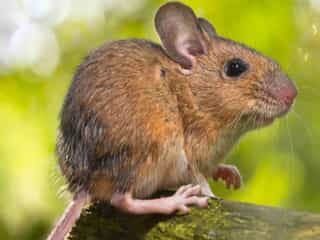
Your yard is a beautiful oasis that you and your family enjoy daily. Unfortunately, your family’s haven could also be a place that rodents call home. Objects found in yards like garbage cans, compost piles, gardens, bird feeders, fruit trees, dense vegetation, outdoor eating areas, and pet food all attract rodents. Rodents present a danger to people and property. They gnaw on almost any object to keep their teeth from overgrowing, and these chewing habits cause structural damage inside your property and can even lead to fire and water damage. Rodents also transmit a wide variety of bacteria, diseases, and parasites that can negatively affect the health of people.
To avoid rodent problems, you must remove their access to food and water sources. Make sure outdoor trash cans and compost bins have tight-fitting lids, remove bird feeders, fix leaky fixtures, and pick up pet food between feedings. Eliminate places for rodents to nest on your property by keeping the grass cut short, trimming back overgrown vegetation, and removing piles of debris. To stop rodents from moving inside your home or business, get rid of as many entry points as possible by caulking cracks in the foundation and exterior walls, repairing holes along the roofline, and sealing spaces around utility entrances.
To learn more about our professional residential or commercial pest control services, give us a call or contact us at Finally Pest Control today!
-